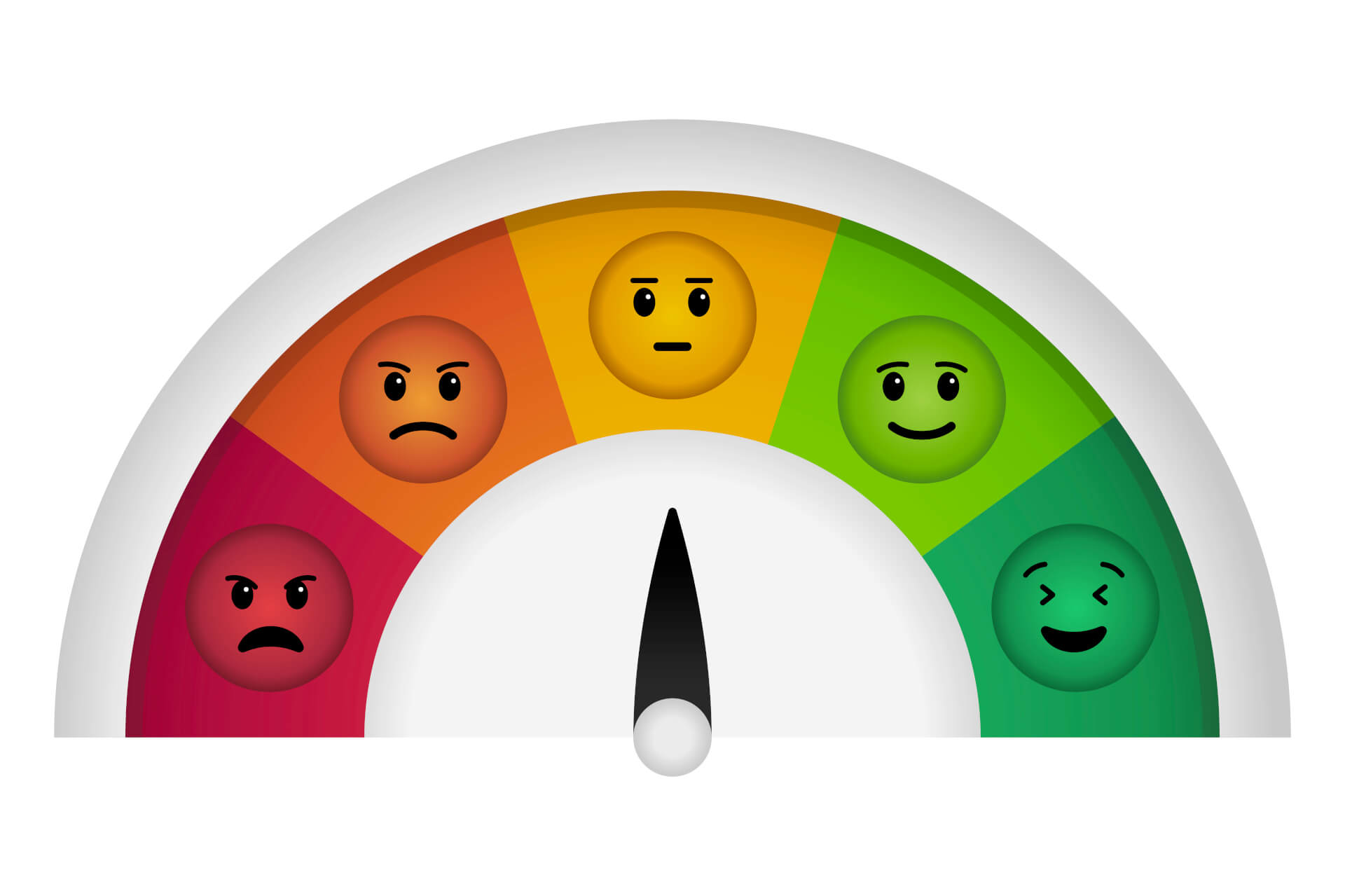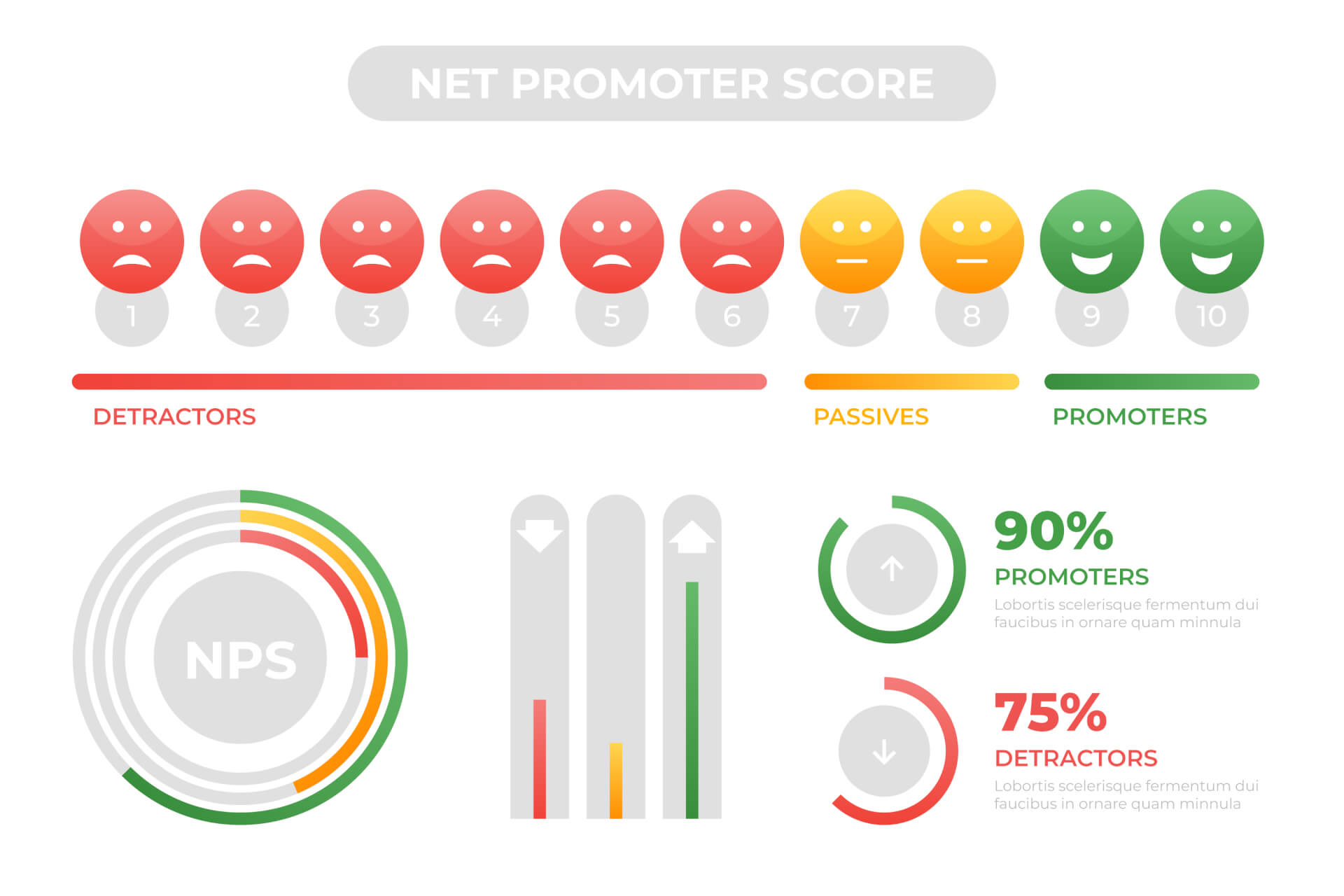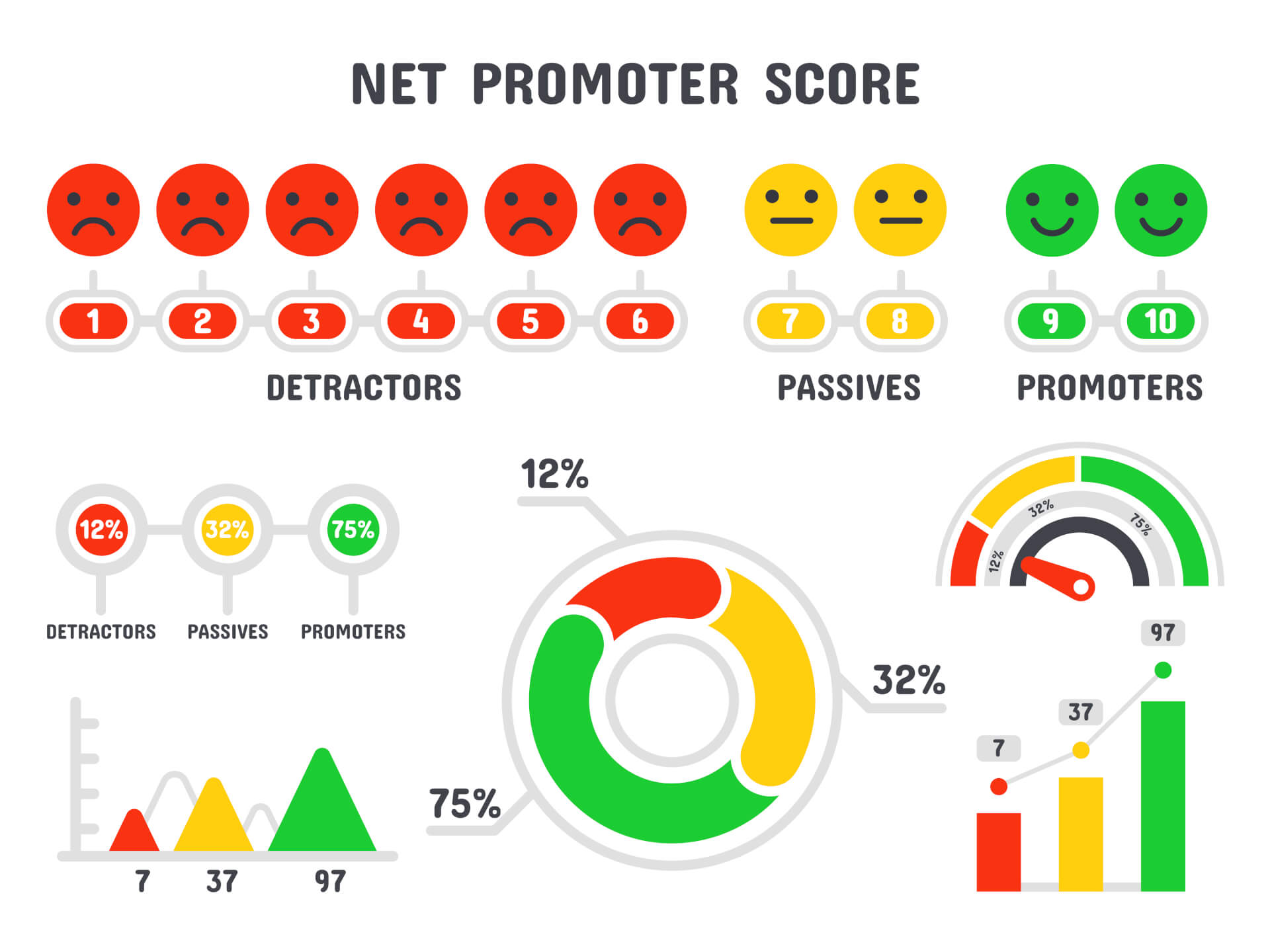
Table of Contents
Introduction to Net Promoter Score (NPS)
 The Net Promoter Score
The Net Promoter Score
The Net Promoter Score (NPS) is a powerful metric used by businesses worldwide to gauge customer loyalty and satisfaction.
Introduced by Fred Reichheld in 2003, NPS has revolutionized how companies understand their customers' loyalty and predict future growth.
 Importance of NPS for Business Growth
Importance of NPS for Business Growth
NPS is more than just a metric; it's a strategic tool that can drive business growth by providing actionable insights into customer behavior.
High NPS scores are often correlated with increased customer loyalty, higher retention rates, and positive word-of-mouth referrals.
Brief History and Evolution of NPS
Originally developed by Bain & Company, NPS has evolved from a simple survey question into a comprehensive system for managing customer experience.
Over the years, it has been adopted by leading companies like Apple, Amazon, and Netflix, who use it to maintain their competitive edge.
Understanding Net Promoter Score
Definition and Concept
NPS is defined as the percentage of customers who are promoters, subtracted by the percentage who are detractors.
This simple yet effective formula helps companies quickly assess customer satisfaction levels.
How NPS is Calculated
To calculate NPS, customers are asked a single question:
"On a scale of 0 to 10, how likely are you to recommend our product/service to a friend or colleague?"
Based on their responses, customers are categorized into three groups
- promoters (9-10)
- passives (7-8)
- and detractors (0-6)
Promoters, Passives, and Detractors
- Promoters are loyal enthusiasts who will keep buying and refer others, fueling growth.
- Passives are satisfied but unenthusiastic customers who are vulnerable to competitive offerings.
- Detractors are unhappy customers who can damage your brand and impede growth through negative word-of-mouth.
NPS Scale and Interpretation
The NPS scale ranges from -100 to +100. A positive score indicates that the promoters outnumber the detractors, while a negative score suggests more detractors than promoters.
Generally, an NPS above 50 is considered excellent, indicating high customer loyalty.
Why NPS Matters

Customer Loyalty and Retention
NPS is a direct indicator of customer loyalty.
High NPS scores reflect a strong customer base that is likely to remain loyal and continue using your products or services.
Predicting Business Growth
NPS is predictive of business growth. Companies with high NPS scores tend to grow faster than their competitors because loyal customers not only repurchase but also refer new customers.
Competitive Advantage
NPS provides a competitive advantage by identifying areas for improvement and highlighting what your customers value most. This information allows you to refine your offerings and stay ahead of the competition.
NPS as a Feedback Tool
NPS serves as a valuable feedback tool, enabling businesses to gather real-time insights into customer satisfaction. This feedback can be used to make data-driven decisions and enhance overall customer experience.
Implementing NPS in Your Business
Steps to Implement NPS
- Define Objectives: Clearly outline what you aim to achieve with NPS.
- Select a Survey Tool: Choose a reliable NPS survey tool that fits your business needs.
- Design the Survey: Craft a simple yet effective survey with the core NPS question and optional follow-up questions.
- Distribute the Survey: Use multiple channels to reach your customers, ensuring a high response rate
- Analyze Results: Regularly analyze the collected data to identify trends and insights.
- Act on Feedback: Implement changes based on the feedback to improve customer satisfaction.

Choosing the Right NPS Survey Tool
Selecting the right NPS survey tool is crucial for successful implementation. Look for features like ease of use, integration capabilities, customization options, and comprehensive analytics.
Designing an Effective NPS Survey
An effective NPS survey should be concise and easy to understand.
The primary question should be followed by open-ended questions to gather qualitative feedback, providing deeper insights into customer sentiments.
Timing and Frequency of NPS Surveys
Timing and frequency are critical for accurate NPS measurement.
Conduct surveys at key touchpoints in the customer journey, such as post-purchase or after customer service interactions.
Regularly scheduled surveys help track changes in customer satisfaction over time.
Analyzing NPS Data

Collecting and Aggregating Responses
Collecting NPS responses involves gathering data from various customer touchpoints.
Aggregating this data helps in understanding overall customer sentiment and identifying trends.
Segmentation and Filtering
Segment your NPS data based on customer demographics, purchase behavior, or other relevant criteria. This helps in identifying specific groups that are more satisfied or dissatisfied and tailoring strategies accordingly.
Identifying Key Drivers of NPS
Use advanced analytics to identify the key drivers that influence your NPS.
Understanding what factors most significantly impact customer satisfaction helps in prioritizing improvement efforts.
Using Advanced Analytics Techniques
Employ techniques like sentiment analysis, predictive analytics, and machine learning to gain deeper insights from NPS data.
These methods can uncover hidden patterns and predict future customer behavior.
Leveraging NPS for Growth

Actionable Insights from NPS
Turn NPS data into actionable insights by identifying specific areas for improvement. Use these insights to enhance products, services, and overall customer experience.
Closing the Feedback Loop
Closing the feedback loop involves responding to customers who provided feedback, addressing their concerns, and informing them about the changes made.
This demonstrates that you value their input and are committed to continuous improvement.
Enhancing Customer Experience
Use NPS insights to enhance the overall customer experience. Focus on areas that will have the most significant impact on satisfaction and loyalty.
Strategies to Convert Detractors to Promoters
- Develop strategies to convert detractors into promoters.
- Address their issues promptly, provide exceptional service, and show that you value their feedback.
- Personalize interactions to rebuild trust and loyalty.
Expert Insights on NPS
Best Practices for NPS Management
- Regularly update and review your NPS survey to keep it relevant.
- Use NPS data to drive strategic decisions across all levels of the organization.
- Foster a culture of continuous improvement based on customer feedback.
Common Pitfalls and How to Avoid Them
- Avoid using NPS as the sole measure of customer satisfaction. Complement it with other metrics
- Don't ignore the qualitative feedback from open-ended questions.
- Ensure timely follow-up on feedback to maintain customer trust and loyalty.
Advanced NPS Strategies
 Integrating NPS with CRM Systems
Integrating NPS with CRM Systems
Integrate NPS with your CRM system to centralize customer feedback and streamline follow-up actions. This integration allows for a more holistic view of customer relationships and facilitates personalized interactions.
Using NPS in Marketing Campaigns
Leverage NPS data in marketing campaigns to highlight your strengths and address areas of improvement. Promoters can be encouraged to share their positive experiences, boosting your brand's reputation.
Employee NPS (eNPS) and Its Impact
Employee NPS (eNPS) measures employee satisfaction and loyalty. Happy employees are more likely to provide better customer service, directly impacting your NPS. Focus on improving employee engagement to enhance overall customer satisfaction.
Predictive Analytics and NPS
Use predictive analytics to anticipate changes in NPS based on customer behavior trends. This proactive approach helps in addressing potential issues before they impact your score, ensuring sustained customer satisfaction.
Future Trends in NPS
 Evolution of NPS Methodologies
Evolution of NPS Methodologies
NPS methodologies are continuously evolving with advancements in technology. New approaches include real-time feedback systems and more sophisticated data analysis techniques, providing deeper insights into customer satisfaction.
Role of Artificial Intelligence in NPS
Artificial Intelligence (AI) is transforming NPS by automating data collection, analysis, and response. AI can identify patterns and trends that humans might miss, offering more accurate predictions and actionable insights.
Predicting Future Customer Behavior
Using NPS data to predict future customer behavior involves analyzing historical trends and current feedback. This predictive power enables businesses to anticipate customer needs and stay ahead of the competition.
Global Perspectives on NPS
NPS is a globally recognized metric, but its application and interpretation can vary across different markets and cultures. Understanding these nuances is essential for multinational companies aiming to improve customer satisfaction worldwide.
Conclusion
Recap of Key Points
Mastering your Net Promoter Score is essential for driving business growth, enhancing customer satisfaction, and maintaining a competitive edge.
Implementing NPS effectively involves understanding its components, analyzing data, and leveraging insights for continuous improvement.
Call to Action for Implementing NPS
Businesses should prioritize implementing NPS as part of their customer experience strategy.
Regularly measuring and acting on NPS data can lead to significant improvements in customer loyalty and overall business performance.
Final Thoughts on Mastering NPS for Growth
By mastering NPS, businesses can unlock powerful growth secrets. Understanding and improving your NPS not only enhances customer satisfaction but also drives sustainable growth.
Start your NPS journey today and see the transformative impact it can have on your business.
 Reading recommendation: If this article helped you and you would like to find out more about the Net Promoter Score, continue reading here: “The Net Promoter Score – Basics and Areas of Application”
Reading recommendation: If this article helped you and you would like to find out more about the Net Promoter Score, continue reading here: “The Net Promoter Score – Basics and Areas of Application”
